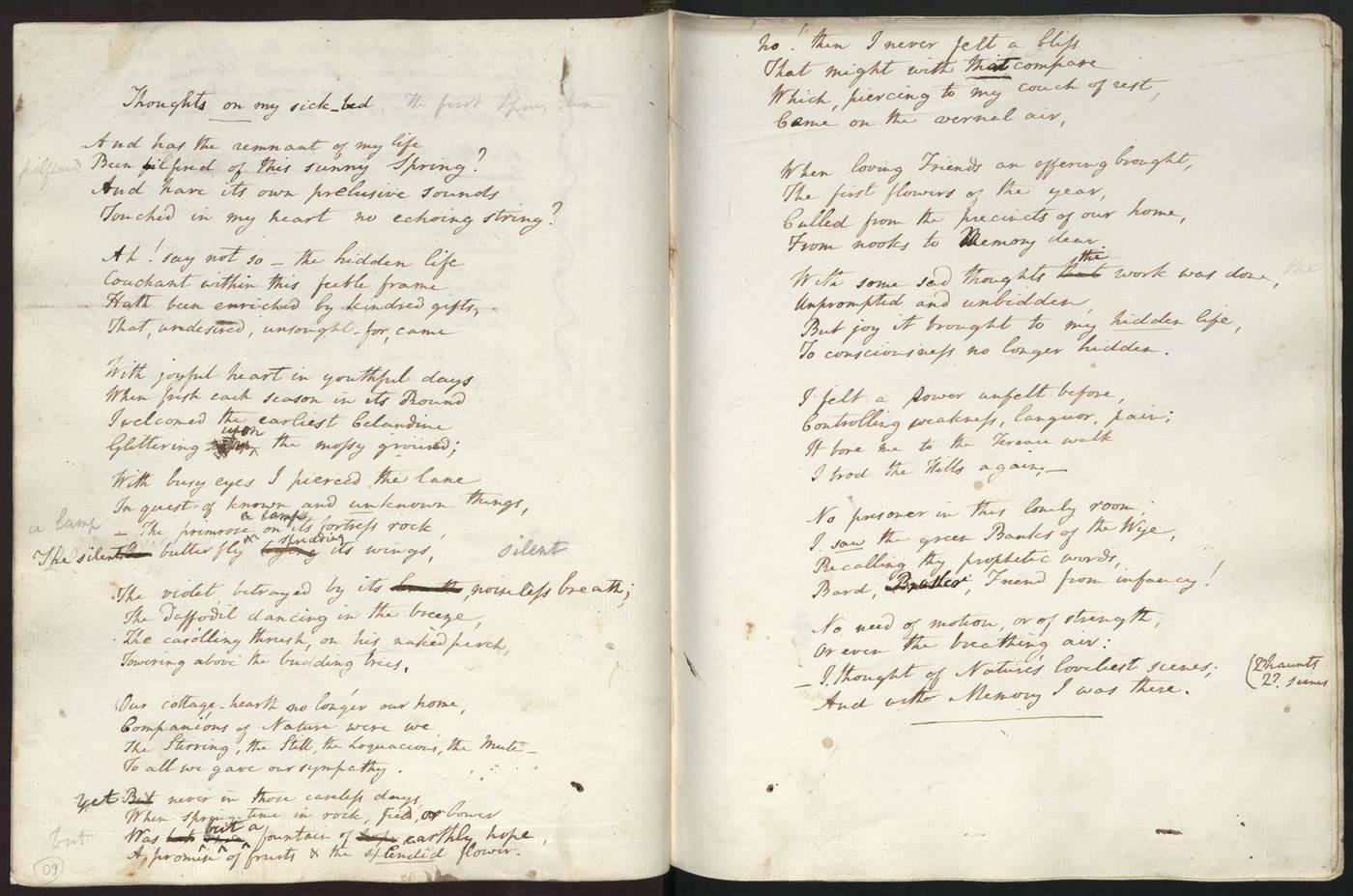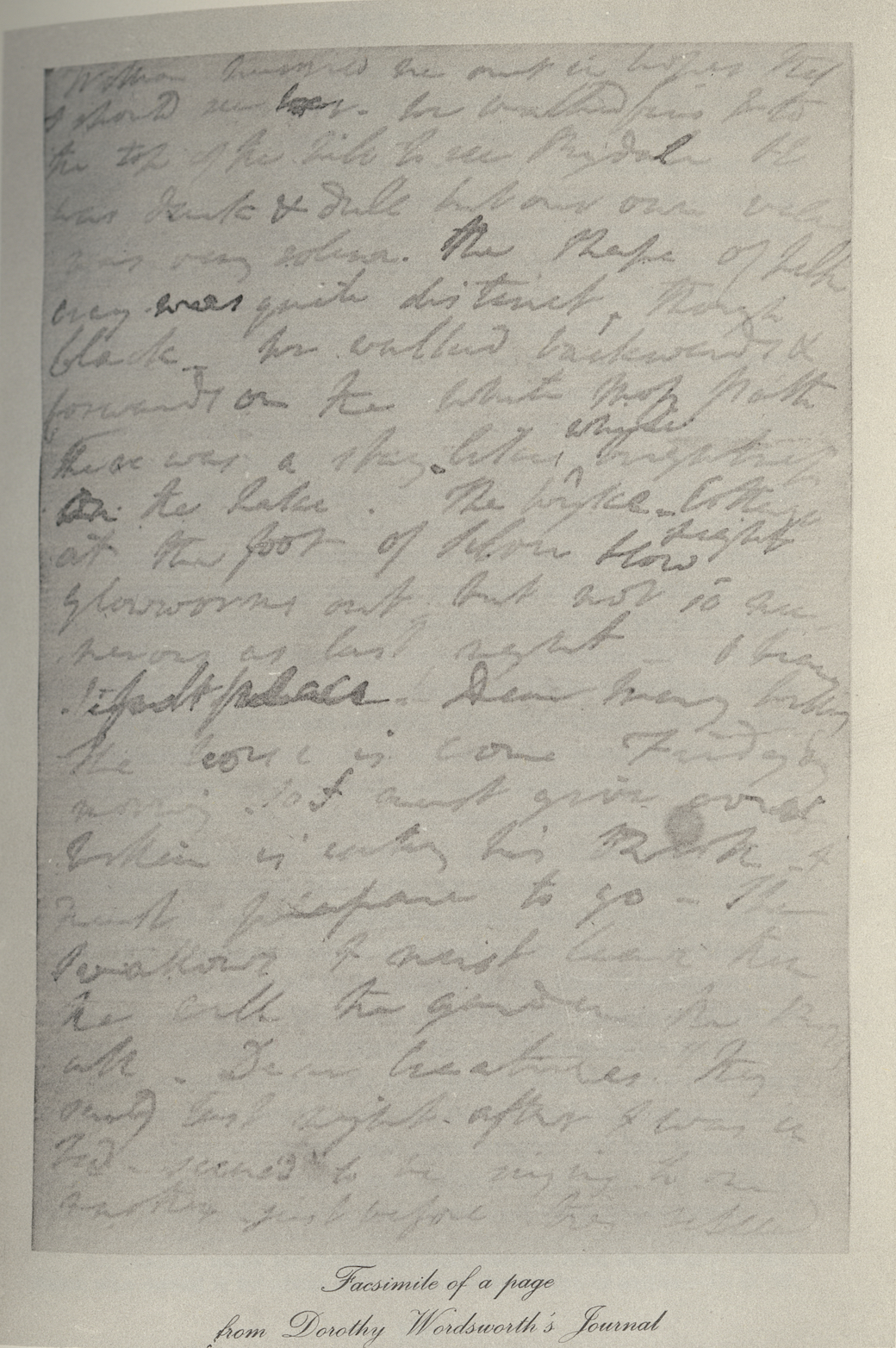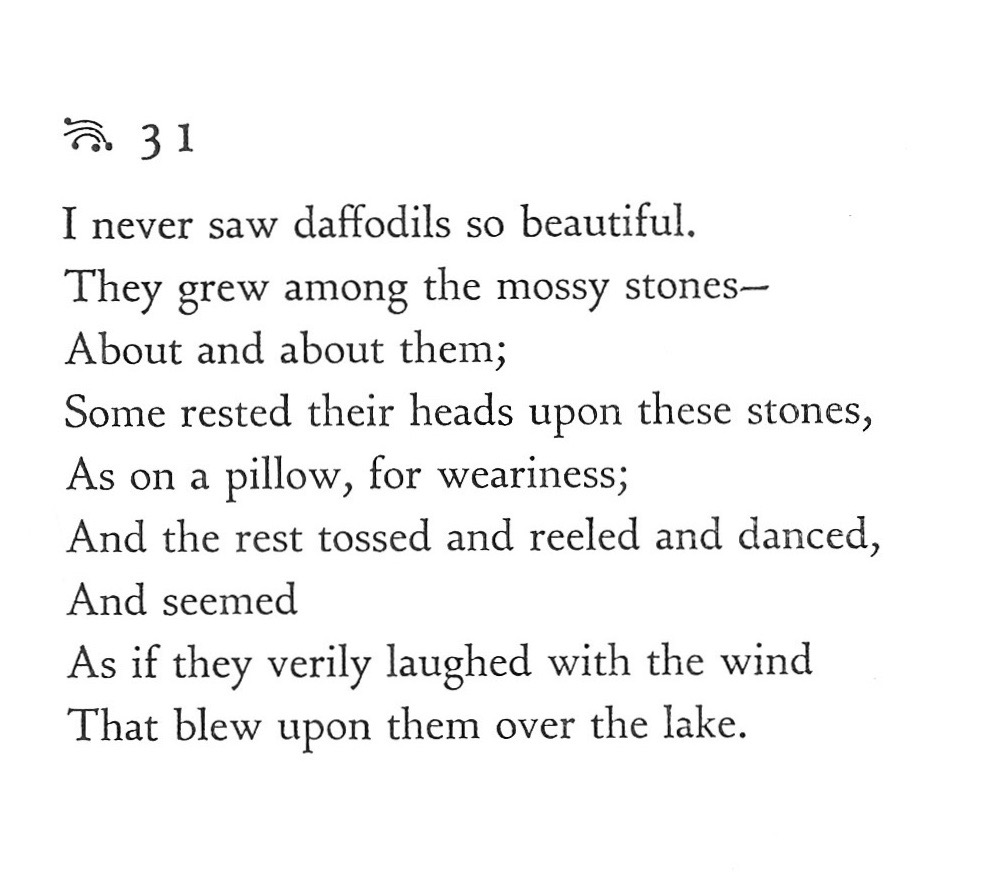Following in the tradition of autobiographical writings that took on new significance in the late 1700s, Dorothy Wordsworth recorded the particulars of her daily life for “William’s pleasure” and to analyze her own observations in exacting detail. Though she has sometimes been seen as a footnote to her more publicly known brother, William Wordsworth, different scholars and editors have attempted to showcase her own talents as a writer. The question is what kind of writer? Many readers have valued Dorothy primarily as a diarist. Others have appreciated her poems, though only a few of these were published in her lifetime, and Dorothy herself (along with other family members) downplayed her skill as a poet. In the early twentieth century, Hyman Eigerman’s Poetry of Dorothy Wordsworth tried to split the difference by arranging passages from her journal entries into freeform poetic lines, but this effort has been criticized as an attempt to mold her in the image of a male Romantic poet. Without attempting to resolve the controversy, the items in this case highlight Dorothy’s movements between poetry and prose, illustrating how the distinctions between these categories sometimes break down.



This display case assembled by Cameron Cornejo, Kristin Pedersen, and Staci Fisher.